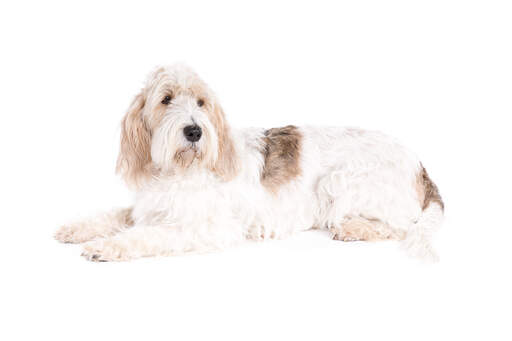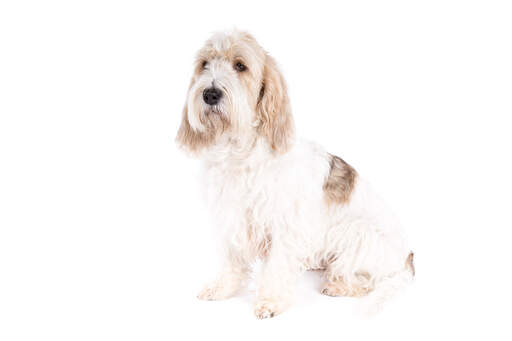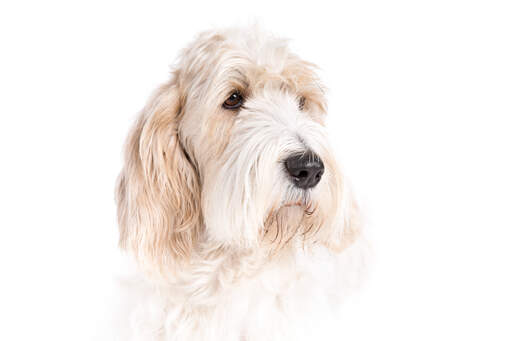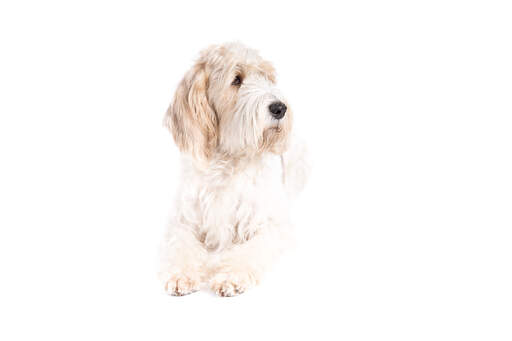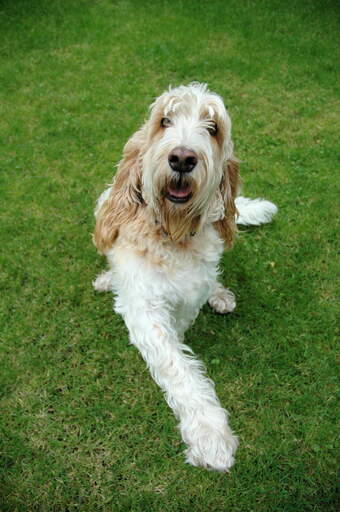Basset Griffon Vendeen (Grand) Dogs





History
The Grande Basset Griffon Vendee (GBGV) was developed in France in the late 19th century, and is descended from the Grand Griffon. It comes from the Vendee region of France, hence the name, where its role was to hunt hare, mainly. GBGVs are still used as pack hunters in this part of France, and their tactic is to track and corner prey. GBGVs are more commonly kept as pets nowadays, though. They have become popular beyond France since the latter part of the 20th century.
Behaviour
GBGVs are great fun - happy and extrovert, and fond of human company. Bred as pack dogs, they thrive in families where someone is at home for most of the day, or to have other dogs around them too, for company. They are great with children and others pets, usually, and remain contented as long as they get plenty of attention. Once bored (e.g. if they are alone for too long), they become destructive, and also suffer stress-related anxiety problems. They like to be involved in daily life and want to know everything that's going on around them - and to join in with it too. They bark/sing when someone is at the door or if they are excited. This is the classic 'Basset howl', a loud melodious, mournful note that many owners love, but which some neighbors might not feel quite so positively about!
GBGVs are hard to train, as they are stubborn and independent-minded (like all the Bassets). But they are clever and intuitive breed, and with firm, fair, and consistent training they will eventually learn everything they need to, and to recognize that you are the boss of their 'pack'. Any signs of weakness on your part, and the dog will try take over the top-dog slot - which you certainly do not want! Repetition is pointless, as they soon become bored with it, and shouting will result in them ignoring you completely. Training need to be based on short games, and food/treat-based tasks.
This breed loves to follow the scent trail, and walking off lead in a non-secure area can often result in the dog bolting, oblivious to everything other han the scent it is pursuing. On roads, this can lead to disaster. A long lead is, therefore, the alternative to enclosed-space walking. The dog's recall is just fine at home or in a controlled area, but selective deafness kicks in when out and about. No amount of cajoling will bring back a Basset on the scent.
Daily exercise is required, to stimulate the dog's active mind. They are excellent hiking companions and have immense stamina on walks - but, again, they can't be allowed to go off lead. They cope well at home as long as someone is around, and will sleep when you are busy. A couple of long walks each day is required, though, to keep them fit and prevent obesity.
Their coat needs regular brushing to remove dead hair and their ears could do with clipping more often to prevent ear canal problems.
GBGVs need to be treated carefully to prevent damage to their delicate spines - especially when young. Preventing them from running up and down stairs, and jumping on and off furniture when puppies can help prevent back problems later in life.
Temperament
Grand Basset Griffon Vendeens are amiable and loyal. They who love long walks in the outdoors, and have terrific stamina. They will happily be on the move with you all day and then fall asleep as soon as you arrive back home. They love human company, including children, but don't like being left alone.
Health Problems
Grand Basset Griffon Vendeens can be prone to canine hip dysplasia (CHD), luxating patella (dislocation of the kneecap), eye problems, glaucoma, and epilepsy.
Breed Details
- Status: Common
- Life Expectancy: 11 - 13 years
- Weight: 40 - 44 lb
- Rare: No
- Coat: Long
- Grooming Requirements: Everyday
- Town or Country: Country
- Minimum Home Size: Small House
- Minimum Garden Size: Large Garden
- Breed Type: Hound
- Size: Medium
- Energy Level: High
- Exercise Required: Over 2 hours

